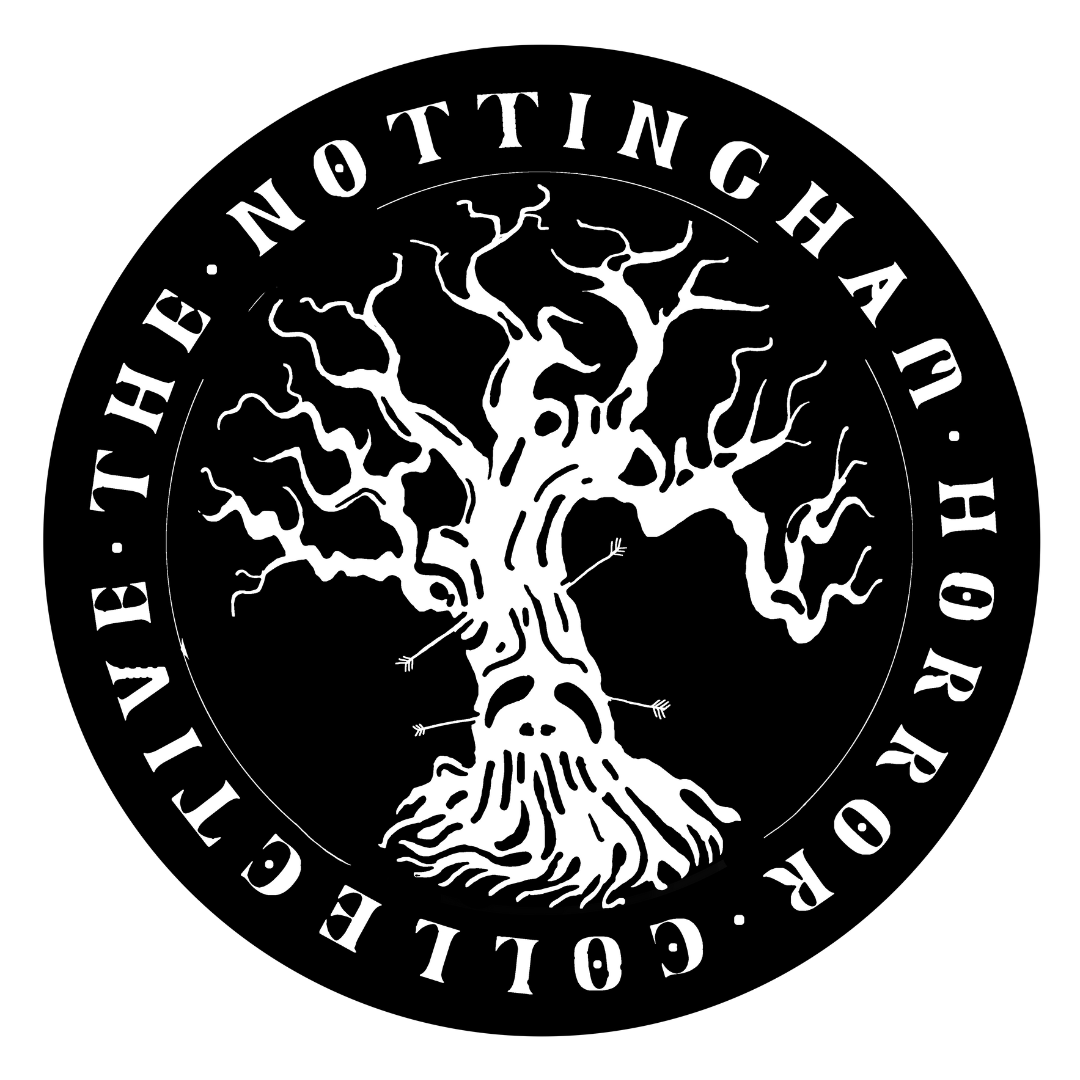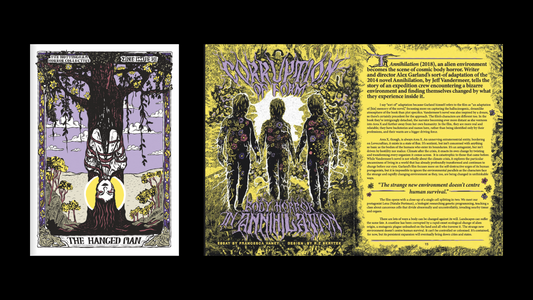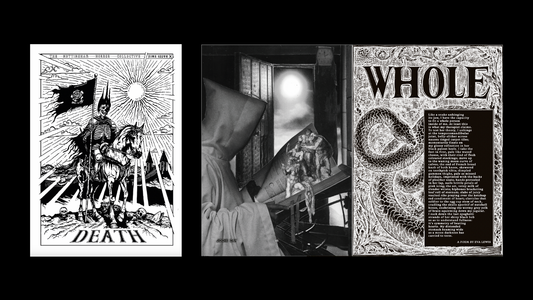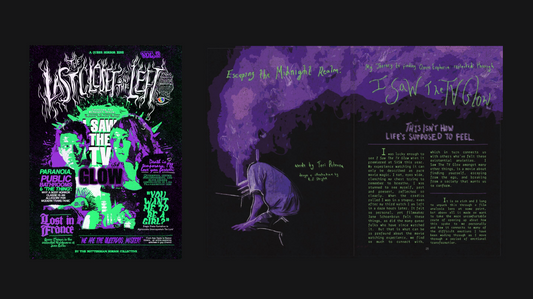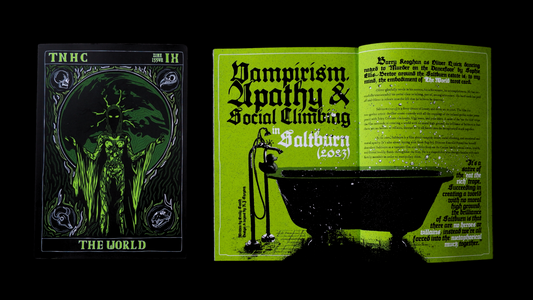We realised, too late into this Horror Histories series, that we hadn’t actually gone right back to the start of Horror Cinema. So, before we move forward, grab your Kinetograph, because we're going right back to the 1896.
From the very beginning, horror latched onto human emotion and social unease with both hands. Behind the screams and shadows, it dealt in anxiety, fear, fascination, taboo. It dragged the things we whispered about into the light and put them on a screen.
And it starts here, with Georges Méliès’ Le Manoir du Diable — often translated as The House of the Devil or The Devil’s Castle. Released in 1896, and widely considered the first horror film ever made. Just two minutes long and world-changing.
Méliès, a master of pioneering film techniques, conjured a visual narrative that was unlike anything audiences had ever seen. Viewers were introduced to images of demons that call back to ancient myths, bats that transform into the devil, ghosts reminiscent of gothic tales, witches that evoked anxieties about pagan folklore. Oh, and a skeleton, to boot.
Each frame of Le Manoir du Diable was meticulously crafted. But its genius lies in the manner it encapsulated the zeitgeist of the era. At the cusp of the 20th century, societies across Europe were undergoing loads of change. Scientific advancements, societal reforms, and the broadening horizons of art and literature were intermingling to create an atmosphere of both excitement and uncertainty.
Le Manoir du Diable taps into these very sensations. The film is a sort of snapshot of an era’s collective consciousness, capturing the inherent curiosity, fear, and wonder of a society in flux. In essence, from the early days of film, horror carved a niche for itself as a genre that dared to probe deeper, to question more critically, and to reflect more profoundly. Le Manoir du Diable isn't just a testament to Méliès' genius; it stands as a beacon, illuminating the rich potential of horror cinema.
Through its brief but impactful frames, the film invites viewers on a journey into the heart of human emotion, societal transformation, and the allure of the unknown. And in doing so, paves the way for a century-long love affair with a genre that continuously challenges and captivates its audience.
Following this, in the early 20th century, film became a playground for innovation. As movies quickly gained global popularity, there was a rush to produce and reproduce stories, resulting in a dizzying array of adaptations in quick succession.
This period saw a keen interest in dark, eerie tales, most notably those by Edgar Allan Poe. French and American filmmakers vied for audiences with adaptations like Le Puits et le Pendule (1909) and The Sealed Room (1909) respectively. But Poe wasn't the only author in focus, because Frankenstein's monster came alive in Edison's Frankenstein (1910) and again in the Italian take, Il mostro di Frankenstein (1921).
Oscar Wilde's enigmatic The Picture of Dorian Gray also found its way into films across various countries, from Denmark's Dorian Gray's Portaet (1910) to Hungary's Az élet királya (1918). Another standout narrative from this era was Robert Louis Stevenson's Strange Case of Dr Jekyll and Mr Hyde, which was such a hit that 1920 saw three separate adaptations of it.
A few film professionals began carving out a niche for themselves in this horror-mania. German actor-director Paul Wegener is one such name, famous for bringing to life the haunting tale of the Golem in films like Der Golem (1915). But it was The Cabinet of Dr. Caligari (1920) that became the talk of the town, particularly due to the brilliant acts of Werner Krauss and Conrad Veidt.
And let's not forget F. W. Murnau's Nosferatu (1922), an unparalleled adaptation of Dracula that became a blueprint for horror movies. This isn't just a chilling story about a fella named Count Orlok. Europe, then emerging from the shadows of a devastating war and threatened by pandemics like the Spanish flu, finds its voice in this haunting masterpiece. Through the gaunt, eerie vampire figure, the film captures a continent's palpable dread of the unknown, of change, of the 'other'.
Meanwhile, Hollywood was embarking on its own horror journey with The Phantom of the Opera in 1925. It's rich, it's atmospheric, and above all, it's reflective. The haunting melodies and shadowed catacombs echoed American societal apprehensions. And as the weight of the Great Depression bore down on the populace, films began to mirror the nation's soul. Dr. Jekyll and Mr. Hyde in 1931 is a testament to this evolution. The narrative encapsulates a nation's internal struggle, grappling with its own moral duality in the face of economic despair.
Interestingly, the term "horror" wasn't set in stone. Films like The Bat (1926) often got dubbed as mysteries or “weird films”. However, one thing was clear: the early 20th century cemented horror's place in the cinematic world, setting the stage for countless spine-chilling tales in the years to come. And as the 1930s unfurled, Universal Studios breathed life into Dracula and Frankenstein, which emerged not just as tales of gothic horror — they bore profound social commentaries. These stories, laced with tension and apprehension, questioned the rapid pace of scientific and technological advancements. They delved into the ethical mazes such progress presented, prompting audiences to question: at what cost?
But more on that, later.
The point is that horror, from its initial stages, was never simply about the spectacle of fear. Its inception marked the beginning of a genre that dared to confront societal shadows, to vocalise silent anxieties, and to mirror our deepest concerns. As it evolved, it matured into a unique medium that went to the dark places other genres dare not tread. It became an art form that posed critical questions, resonated with collective experiences, and sought to understand the human psyche's darker corners.
